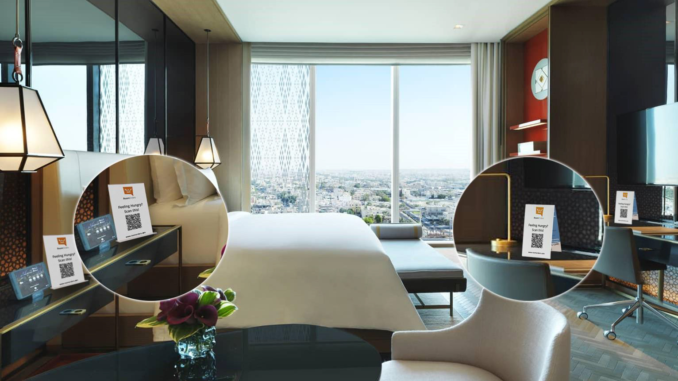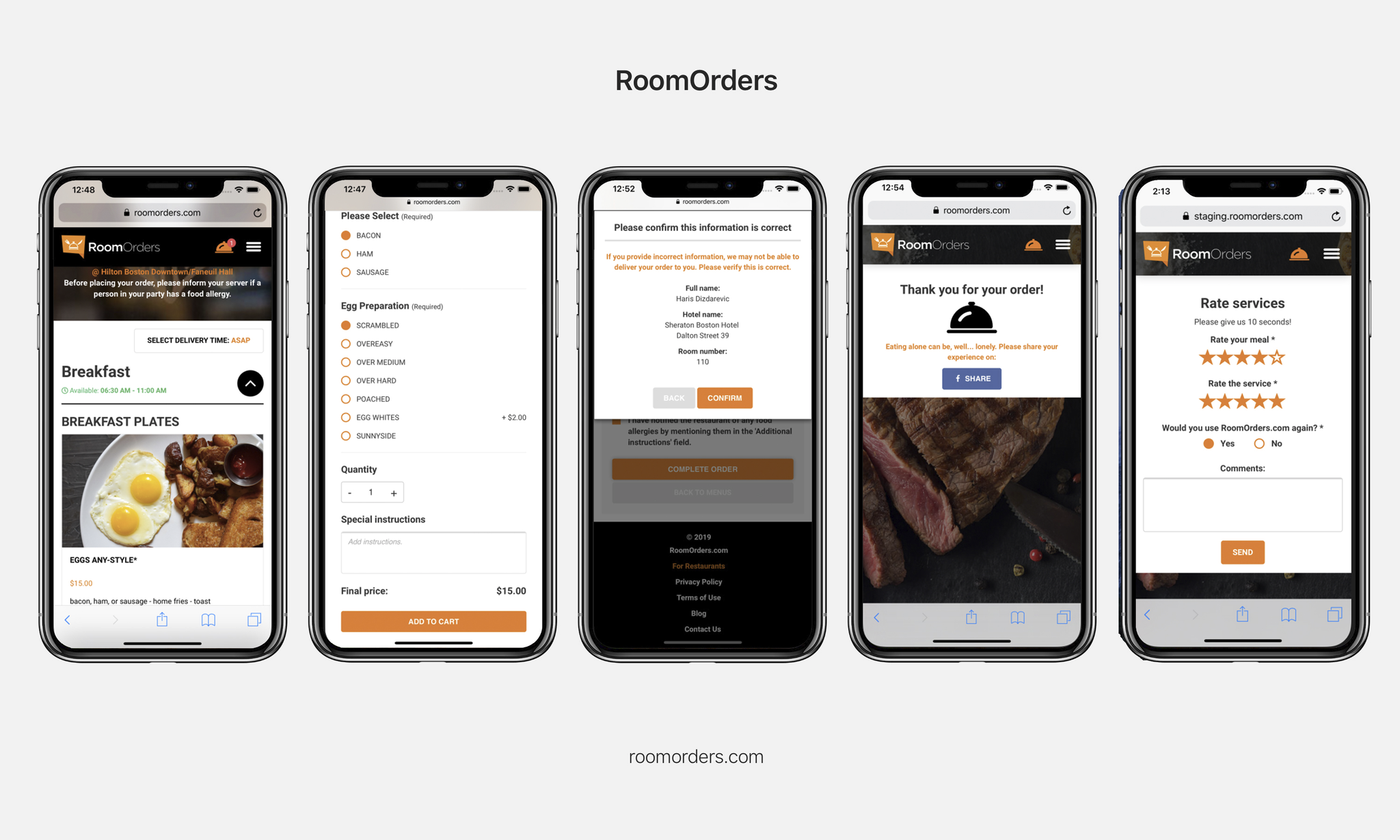
9.13.2019
RoomOrders, a web app that offers a cloud-based digital menu to streamline food and beverage operations by allowing hotel guests to order the hotel’s in-room dining service using their own smartphone, tablet or laptop, announced that the solution is now available for free trial in hotels in the United States.
RoomOrders has been shown to drive revenue growth for hotels by protecting against online food ordering and delivery platforms that take away market share from their restaurants and kitchens. It has also been shown to improve the quality of the guest experience.
Among the first U.S. hotels to trial RoomOrders is Fin Point in Boston Hilton Downtown, which quickly benefitted from the solution, increasing average order value by over 30% in 3 months. “RoomOrders helps hotels answer dilemmas between in-house and outsourcing room orders, keeping guest experience at the heart of any decisions,” said Ed Mroz, General Manager at Hilton Boston Downtown.
Hilton Sydney and Hilton Belgrade, which are also among the latest hotels to deploy RoomOrders, both achieved similarly impressive results.
“We developed RoomOrders to help hotels embrace the future and protect their real estate. RoomOrders provides hotels with an easy and visually appealing way to digitize room service. It also helps hotels phase out fixed phones and compete with outside food vendors and ordering platforms, like UberEats, DoorDash and GrubHub, keeping this invaluable source of revenue in-house,” said Eugene Jones, CEO of RoomOrders. “RoomOrders is a win-win solution as it makes a stay more pleasant for guests and more profitable for hotels, and that’s why we’ve attracted interest from the world’s leading hotel chains.”

The way RoomOrders works is simple. Guests can visit the website or scan the RoomOrder QR code displayed in their hotel room, opening up a vividly illustrated menu on their smartphone, tablet or laptop, with no need to download an app. Guests can then scroll through images of menu items, place an order in a few clicks from their room, or in transit, and track delivery time.
After receiving their food, guests will be prompted to share images on their social networks, nurturing user-generated content, and rate their meal and service, providing valuable real-time, private feedback directly to the hotel.
“Our solution not only increases the total number of room orders, but also the value per order, as guests can be easily upsold and cross-sold side dishes, beverages or desserts, and they are more inclined to order more expensive dishes when they see images,” said Jones.
Hilton Sydney head chef Kruno Velican said RoomOrders was easy to implement as it requires no special or dedicated hardware, or extensive team training. “We introduced the solution without disrupting any established processes, any up front costs or fees, and the trial is exceeding all expectations,” he said.
Other common problems that RoomOrders solves include language barriers as the app is multilingual, reprinting menus for seasonal dishes, guests getting a busy signal or being placed on hold, and staff members not being able to provide detailed information about the menu.
Given that hotel restaurants and kitchens trialling RoomOrders have typically increased revenues by 30% or more and, in some cases, by more than 120%, it’s no wonder that hotels around the world are eager to follow suit. Sheraton in Zagreb deployed the app earlier this month. A wide range of hotels across Europe, from The Netherlands to Montenegro, are signing up to be next.
Starting as a digital menu for hotels, RoomOrders has evolved into a multifunctional platform that helps hotels maintain their local ecosystems, integrating hotel guest data, user-generated content and third-party suppliers to meet the challenges of disruption in the hospitality sector.
